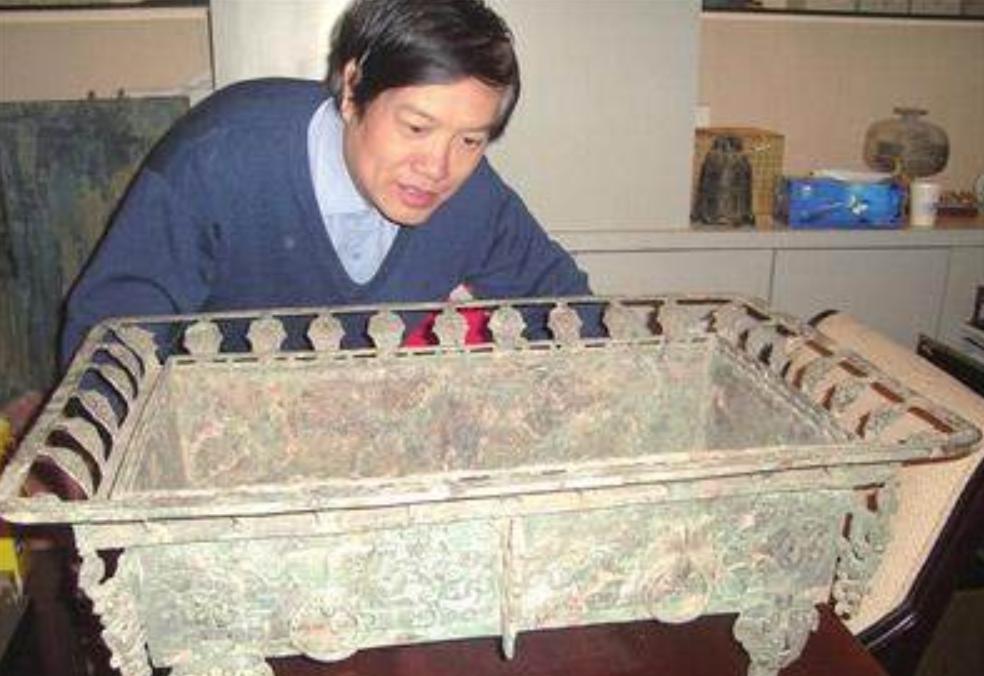History is the memory of things that have been said and done. —Carl Baker
Since the abdication of the Qing Emperor in the Xinhai Revolution, the status of the Manchu Qing imperial family has also plummeted. Although Yuan Shikai's Republic of China government gave the Manchu Qing royal family a certain amount of state financial subsidies every year, the palace people, who had long been accustomed to spending lavishly, were often too poor to open the pot. Coupled with the poor supervision of the Imperial Palace by the Republic of China government, the Manchu Qing widows and young people in the Imperial Palace often stole and sold the national treasures in the Imperial Palace in exchange for money. So much so that in the early days of the Republic of China, the precious cultural relics in the Forbidden City Palace were lost like crops suffering from a plague of locusts.

Among them, a painting of the "Ten YongTu" created by the Northern Song Dynasty painter Zhang Xian is missing.
It should be known that the "Ten Yong Tu" is a silk hand scroll and color painting created by the Northern Song Dynasty painter Zhang Xian in the fifth year of the Northern Song Dynasty (1072). "Ten Yong Tu" is a landscape figure painting, the opening part of the picture is a corner of Wuxing South Park, the main building is a pavilion with heavy eaves on the top of the mountain, with a small pavilion railing looping, flowers and trees, cranes in the garden, a flower in the corner of the pavilion, the environment is elegant and the weather is magnificent. In the pavilion, Matthew Shouzheng accompanied the second elder to sit and play chess; Inside the small pavilion, the second veteran holds the railing, while enjoying the scenery and gossiping; The other two elders came with a violin or a dragging stick. In addition, there are child servants to accompany the waiters.
The preface to the painting has the four characters of the Qianlong Emperor's Handwritten Book "Recitation of Fen Writing Miao", and the tail has the Southern Song Dynasty Chen Zhensun, Yuan Yan Yaohuan, Xian Yushu, and Detu Mu'er Four Treks, and the painting has the Northern Song Dynasty Sun Jue Yi Bao. On this canvas there are seals such as "Yuesheng", "Autumn Gap", and "Autumn Gap Play Reward" of the Southern Song Dynasty, half-print of "Ceremony Inspector's Seal" in the early Ming Dynasty, more than ten squares of Qianlong and Jiaqing Baoxi of the Qing Dynasty, and Puyi Printing Three.
It can be said that the value of the "Ten Arias" is like a wall, and it has the important value of both historiography, literature and local literature and history. But no one could have imagined that this exquisite work would be discovered at home by an old man in the northeast decades later.
In 1997, an old man who had passed the age of ancient times planned to divide his children's property so that everyone would not be able to fight for the blood. However, the old man's family property is simply not enough for 7 children, and since he cannot favor one over the other, he has to add some price codes. The old man took his treasure "Ten Yongtu" to beijing Hanhai Auction Company for valuation and prepared to sell it for a good price.
The old man said to the staff of the auction house: "This is Zhang Xian's "Ten Yong Tu" from the Northern Song Dynasty, which was the beloved object of Empress Dowager Cixi at the beginning. This sentence shocked the staff, so they hurriedly found a well-known expert to identify.
After receiving the news of the existence of the "Ten YongTu", Xu Bangda, Qi Gong, Liu Jiu'an and other people in the archaeological community at that time came to Beijing, and after identification, experts unanimously determined that this was a genuine work.
At first, out of the position of cultural relics protection, the Cultural Affairs Bureau negotiated with the elderly to purchase the painting for 10,000 yuan. However, the old man is also a knowledgeable person, he knows that this painting was rewarded by his father when he was a bodyguard for Puyi, and today he has to provide a valuable reward for his 7 children and himself, which is the benefit left by the ancestors to the future generations. When the old man opened his mouth, he asked for one million per person, for a total of eight million. The Cultural Affairs Bureau could not afford so much money, so it had to let the "Ten YongTu" enter the public auction process, and under the influence of many rich people, the Palace Museum finally got the painting for 18 million yuan.